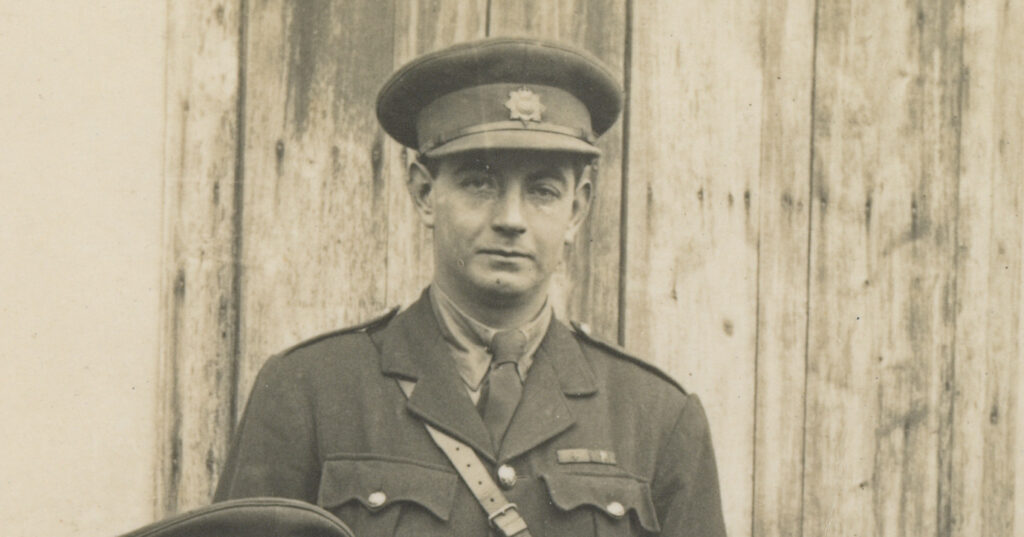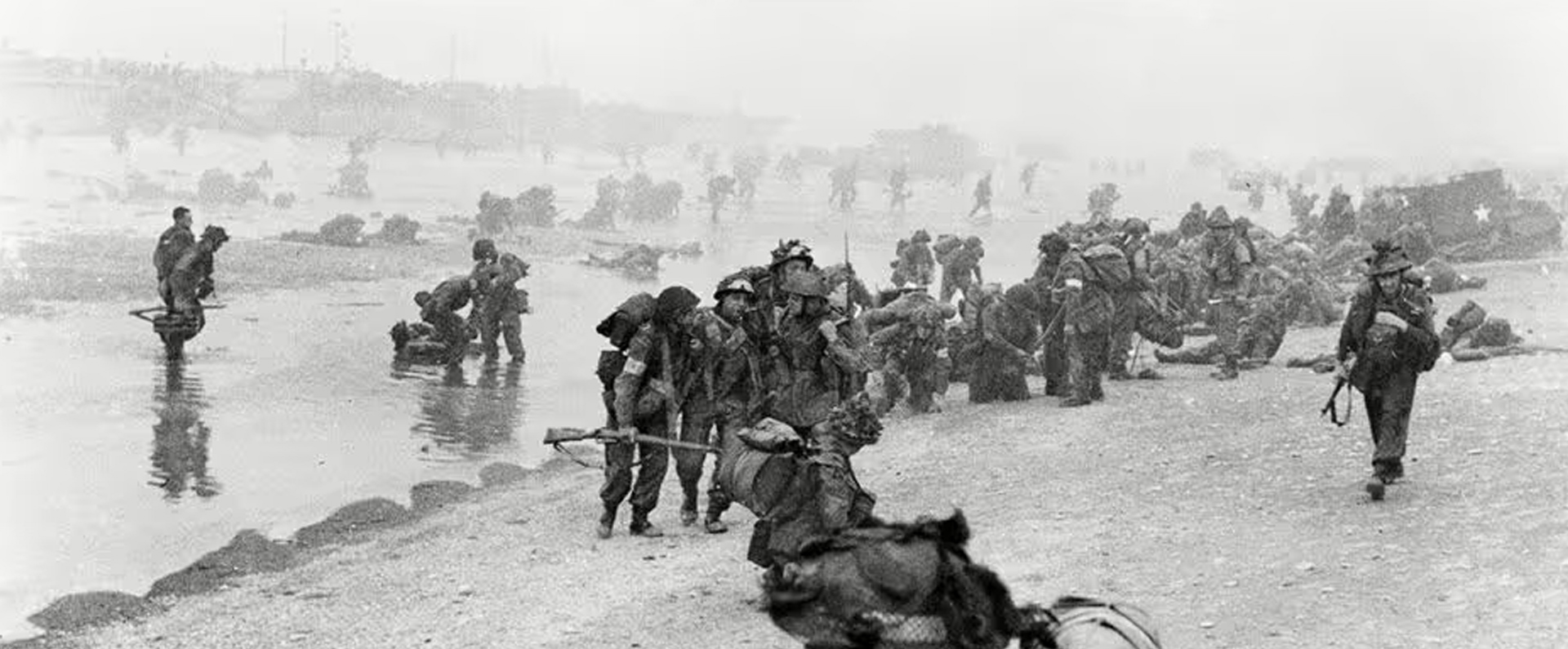
Published in Britain at War in November 2017.
Captain Montagu Shadworth Seymour Moore VC: Endurance
Montagu Shadworth Seymour Moore was born in Worthing, Sussex, on 9 October 1896. He was the elder son of Frederick Moore, a barrister who had earlier served in the Army, and his wife Gertrude. Moore was educated at Bedford (Grammar) School from 1906-13, later receiving a year’s private tuition while his family lived in Bournemouth, Hampshire, followed by classes at the town’s Municipal College. His education was completed at the Royal Military College, Sandhurst.
In August 1916, and aged 19, “Monty” Moore was commissioned as a second lieutenant into The Hampshire Regiment. Within a month, he had been dispatched to France with the regiment’s 15th Battalion – one of the newly-raised Kitchener battalions.
In a letter home dated 5 November 1916, Moore revealed his daring nature: “One night I crawled out across ‘no man’s land’ up to the Boche [German] wire 60 yards away, it was most exciting. I discovered the position of a machine gun that was causing a lot of trouble. When I got back, I put the Lewis gun team on to that spot & they cleared them out. I think their Boche gun was put out of action…”
In a letter to his mother dated 18 November 1916, he disclosed that he had been appointed Aide-de-Camp (ADC) to the Brigade General on a month’s trial. After a short spell at Brigade Headquarters, he was transferred to the 1st Battalion of his regiment in January 1917.
Moore was back with his original battalion, the 15th, in time for the operations at Messines, Belgium, on 7 June 1917. During the advance, Moore was wounded in the leg by shrapnel and he needed hospital treatment.
Within three months of being wounded, and having taken some leave, he was back in action with his battalion, and during September and October he served in the Flanders region of Belgium.
The second phase of the Third Battle of Ypres began on 20 September 1917 and there was soon some fierce fighting. During the battle, Moore showed quite exceptional bravery and endurance in the “Tower Hamlets” area of fortified trenches and pill-boxes. The immediate result of this was that he was elevated to company commander with the rank of acting captain.
On 8 November 1917, his VC was announced in the London Gazette as a result of the remarkable bravery he had shown in that September. His citation stated: “For most conspicuous bravery in operations necessitating a fresh attack on a final objective which had not been captured.
“2nd Lt. Moore at once volunteered for this duty and dashed forward at the head of some 70 men. They were met with heavy machine gun fire from a flank which caused severe casualties, with the result that he arrived at his objective – some 500 yards on – with only a Serjeant and four men. Nothing daunted, he at once bombed a large dug-out and took twenty-eight prisoners, two machine guns and a light field gun.
“Gradually more officers and men arrived, to the number of about 60. His position was entirely isolated as the troops on the right had not advanced, but he dug a trench and repelled bombing attacks throughout the night. The next morning he was forced to retire a short distance. When opportunity offered he at once reoccupied his position, re-armed his men with enemy rifles and bombs, most of theirs being smashed, and beat off more than one counter-attack.
“2nd Lt. Moore held this post under continual shell fire for thirty-six hours until his force was reduced to ten men, out of six officers and 130 men who had started the operation. He eventually got away his wounded, and withdrew under cover of a thick mist.
“As an example of dashing gallantry and cool determination this young officer’s exploit would be difficult to surpass.”
Moore later recalled that his General and Commanding Officer greeted his return with complete astonishment, having “given me up as dead long ago”.
He received his VC from George V at Buckingham Palace on 21 November 1917. He was also awarded the French Croix de Guerre for having “shown the most brilliant military qualities”.
After his VC action, Moore’s battalion was removed from the frontline and spent time training drafts from a yeomanry unit. He served as a bombing instructor (“bombs” being the term used for “grenades” during the Great War) and, later, as ADC to Lieutenant-General John Du Cane, the commander of XV Corps.
After a short spell in early February 1918 with the 5th Army Infantry School, he was soon back in the thick of the action for, after the Germans launched their Spring Offensive on 21 March 1918, he was sent, along with his training unit, to try to halt the enemy advance.
Moore survived the war and, in May 1919, he continued to serve with his regiment as part of the 238th Special Brigade in North Russia Relief Force. After his return to Britain, he was transferred to the 1st Battalion and was dispatched to Constantinople, joining the Army of the Black Sea.
After being seconded to the Colonial Office for service in February 1921, he embarked on a new adventure – to East Africa, where he was posted from March 1921 to the 2nd Battalion, King’s African Rifles, in Tanganyika Territory, now Tanzania.
On 1 September 1926, Moore retired from the Army with the rank of captain and he went on to work as a ranger and chief game warden in Tanzania and Kenya.
Moore died from renal failure in Kiganjo, Nyeri, Kenya, on 9 September 1966, a month short of his seventieth birthday. He was cremated at Langata Cemetery, Kenya, and his ashes were scattered in both Nairobi National Park, Kenya, and the Serengeti National Park, Tanzania. There is a memorial plaque to Moore in the Memorial Hall at Bedford School (formerly Bedford Grammar School). I feel privileged to be the custodian of his medal group having purchased it privately in 2011.
Download a PDF of the original Britain at War
For more information, visit:
LordAshcroftOnBravery.com


